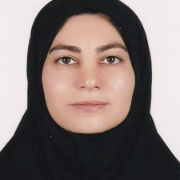Dear Editor,
In the last decades, pediatric obesity has increased worldwide, with metabolic syndrome in adolescence or adulthood being its main sequels (1). Unhealthy lifestyle factors such as a diet with inadequate fruit and vegetables, high consumption of processed and junk foods, physical inactivity, high levels of media use as well as sedentary style, and psychosocial stress are risk factors that negatively contribute to overweight and metabolic disorders in adolescence (2).
Adolescence is a transitional period from puberty to adulthood when the physical and mental development occur. Changes in the function of the hypothalamic-pituitary-ovarian axis activation during normal puberty bring about emotional and hormonal changes as well as stimulate physical development such as menstrual patterns and breast development. This period may be affected by polycystic ovary syndrome (PCOS), which has been documented in 6 to 18% of adolescent girls (3, 4). Since the symptoms of PCOS overlap with the features of normal pubertal development, diagnosing PCOS becomes a challenging task during adolescence (5).
Hyperandrogenism and unovulatory cycles are two main characteristics of this syndrome. Clinical signs of hyperandrogenism are the moderate to severe hirsutism and acne. Ovulation disorder may appear as oligo or amenorrhea. Infertility, insulin resistance (IR), impaired glucose tolerance, type 2 diabetes, fatty liver disease non-alcoholic (NAFLD), as well as metabolic syndrome, and increased cardiovascular disease are other consequences of PCOS (6).
In the last decades, PCO has followed an increasing pattern (7). In addition, PCOS incidences in adolescence have recently risen to a peak (8), which requires taking urgent measures to treat it at this early period. Prevention strategies should also be adopted to deal with children and adolescents suffering from metabolic syndrome, since the adolescents with PCOS have higher BMI than normal children with the same age, which makes them prone to metabolic syndrome. Therefore, it is recommended that a proper and early diagnosis of polycystic ovary syndrome should be provided as the main method to prevent metabolic syndrome in adolescence (9).
Hence, therapeutic approaches to treating an adolescent with polycystic ovary syndrome focus mainly on the main clinical symptoms and chief complaints (5, 10). A systematic study has shown that lifestyle modifications such as exercise and weight loss remain the first-line treatment for adolescents with PCOS (11). Taking vitamin D supplements, as well as other supplements such as the combination of myo-inositol and α-lipoic acid have been also recommended for treating adolescent girls with this syndrome (12-15).
Lifestyle modifications can be added to first-line medications, including metformin, oral contraceptives (OCs), or anti-androgens (16). Approximate weight loss of 5 to 10% in obese PCOS patients improves the clinical, hormonal, and metabolic parameters, quality of life, proper body composition, sleep quality, and self-esteem. Furthermore, it is effective in reducing depression, anxiety, and fatigue (17).
One of the most important steps to take when implementing preventive and therapeutic measures designed to help adolescents is to provide them with a lifestyle guide prepared by experts in accordance with their native language and culture (18). However, information alone is not enough to produce desirable changes in health behaviors. Raising public awareness is the first step to take when educating children about healthy lifestyle, but it is not the final one when changing behavior is desired (19). Parents also play crucial roles in teaching adolescents the healthy lifestyle and improving their educational process, providing that the facilities are provided, and barriers are removed (20). In addition to the crucial role played by parents in teaching adolescents the healthy lifestyle, schools are of great importance in the given regard. Schools are the main guidance centers where adolescents are taught about healthy lifestyle (21, 22).
In conclusion, modifying bad eating habits among teens and encouraging the teens to participate in physical activities improve their long-term health.
